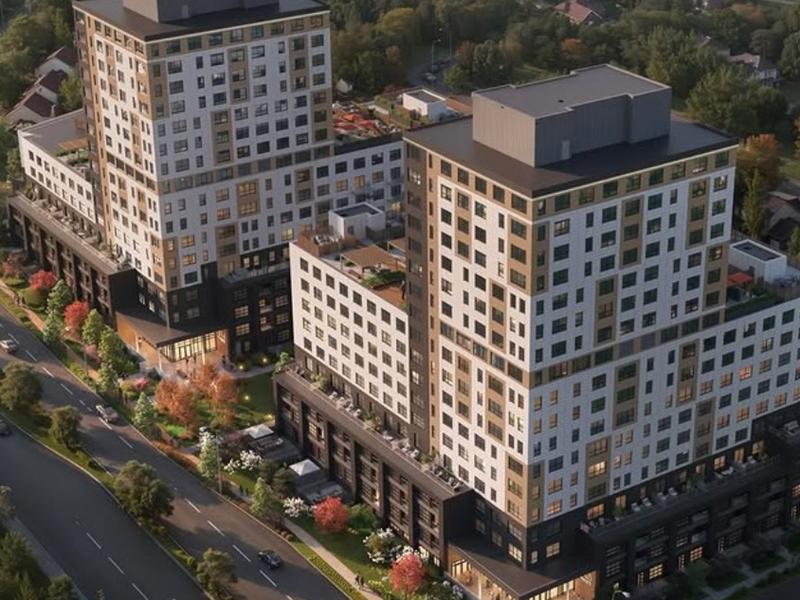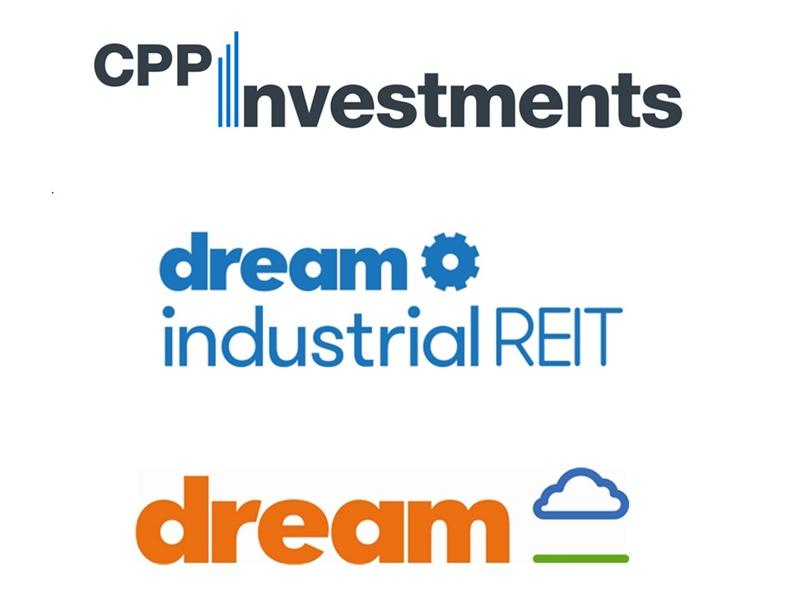GUEST COLUMN: Increased capital stores, low interest rates, and record stock market valuations have fuelled new interest in commercial real estate investment opportunities.
Traditionally, investors have often been attracted to Vancouver’s supply-constrained, high-demand office and multifamily markets for their stable occupancy, steady rental rate growth and exceptional liquidity.
However, limited supply and ever-compressing yields in traditional asset classes have spawned increased interest in opportunities outside the conventional office space.
Since the onset of the pandemic, several asset classes have experienced significant gains. A notable and perhaps unexpected shift was the life sciences investment sector, where we are now witnessing firsthand the development of this relatively new asset class growing in both availability and demand.
Global investors looking for a stable place to invest capital are increasingly looking at life sciences real estate as an alternative solution to help solve both the availability and yield concerns.
Many investors know there is the benefit of both returns and stability when investing in commercial real estate and are looking at those opportunities available outside of the traditional office, multifamily, or industrial sectors.
Life science a quickly growing sector
Real estate investors in the life sciences space simply buy up laboratory space and lease it to life science companies – but what happens when there is no space to buy and lease?
The sector has been subject to increased interest over the past year as biotech and pharmaceutical companies experience this sudden buy-in from venture capitalists and investment firms; and understandably so, considering it’s a top-performing sector, essentially recession-proof, and the need is growing.
Since fall of last year, large sums have been allocated toward REITs with life science portfolios.
In October 2020, renowned Blackstone Real Estate Partners announced it raised $7.5 billion for its new life sciences fund as part of its long-term capital returns strategy.
Blackstone also announced its plans to manage BioMed Realty, which recently sold for $14.6 billion in a deal with the largest private owner of life science office buildings in the U.S. (with an 11.3-million-square-foot portfolio concentrated in leading innovation markets such as Boston, San Francisco and San Diego).
This transaction was part of its long-term strategy to attract investors looking to maintain or increase exposure to life science office; and Blackstone isn’t the only major player taking notice.
Madison International disclosed a $1.7-billion investment in U.S. life sciences developer IQHQ, and Tishman Speyer formed a U.S. life science real estate development company with Bellco Capital that raised $1 billion to purchase lab facilities across the world.
Putting Vancouver on the radar
Until now, investment trusts have been familiar with the global hot spots for life sciences real estate in Europe and the United States.
However, heightened global demand for space will begin to pave the way for cities with strong academia and core fundamentals in the life sciences sector to flourish – cities like Vancouver.
Real estate investors are showing a noticeable interest in investing in lab space in Canada’s life science hubs in Montreal, Toronto and Vancouver. In 2019, B.C. biotech companies raised $700 million from the top four deals; this was followed by raising a record $1.5 billion in 2020.
At the end of 2020, we saw AbCellera dominate with its successful IPO with a current valuation of over $10 billion. It joined Zymeworks and Aurinia, two other B.C. biotech companies with valuations in the billions.
However, we’ve sadly witnessed countless expanding local companies flee to neighbouring hubs, or even abroad, due to the lack of space available in Vancouver.
From a commercial real estate perspective, founding principles based on stable long-term returns and significant up-front costs will not adequately facilitate the economic development of our city.
In order to see more developers engage in life sciences real estate projects, we need to adjust our thinking and consider life science real estate as a new and rapidly growing asset class all on its own that provides sustained returns from increasing demand.
The emergence of this asset class provides yet another opportunity for real estate investors – and because there is an abundance of capital coming into this sector, investors are taking note.
Life science space is lacking
The problem our city faces is lack of supply. Tenants looking to lease lab and biotech space are unable to find availabilities that meet requirements for lab operations, and since they often require considerable upfront costs to retrofit or construct, companies are often forced to look elsewhere.
Many of the pre-existing vacant spaces in Vancouver are not compatible as lab space because their floor plates are not large enough to accommodate the required mechanical and ventilation systems.
Lab-capable space has complex requirements, including high ceilings to accommodate additional venting to circulate fresh air, which in turn carries with it the likelihood of reducing site density for building owners.
It is important to understand that although this type of real estate development may not be the most conventional route, like any asset class developers are inherently and monetarily incentivized to build in-demand product. High demand means more competitive rental rates and higher occupancy levels.
Not only is life sciences real estate poised to be a sound investment, but developers can contribute to Vancouver’s health-care infrastructure for generations to come.
With venture capital money available to the biotech sector, there exists a potential for exponential growth and foundational support for B.C.’s economic recovery. Development of this kind holds the power to deliver innovation, attract investment and create high-paying jobs.
But, emerging companies need somewhere to innovate. These companies’ resources would be better used to hire researchers and fund studies, rather than deploying capital to retrofitting or building space. The solution would be to pull together the insurmountable demand and ecosystem to build one larger facility that can help solve the problem.
New hospital offers new opportunity
This is being done in other cities across Canada, and for the first time there is an opportunity to advance this mission here in Vancouver . . .
The new St. Paul’s Hospital at the Jim Pattison Medical Centre just kicked off construction in what will be the largest hospital redevelopment project in British Columbia’s history. It plans to transform the future of health care by providing this much-needed infrastructure.
Providence Health Care (PHC) is seeking a development partner to help create the Clinical Support and Research Centre (CSRC), a state-of-the-art medical research and innovation centre and professional office complex at the campus.
This new building will be the centre of the city’s biotechnology and medical research industry, putting Vancouver on the map as a world-class medical and health-care hub.
The CSRC will consist of fully integrated wet and dry research labs, medical offices, meeting and conference space, and administrative space in Vancouver’s burgeoning technology precinct.
Its purpose is to allow local life science companies to innovate and provide them a space to grow locally.
The CSRC will be located on an approximately 114,000-square-foot site on the new St. Paul’s Hospital at the Jim Pattison Medical Centre and can accommodate approximately 680,000 square feet of density through rezoning. The developer will lead the design and construction of the CSRC component.
The intent is to develop the site to the maximum density, exceeding Providence Health Care’s own space requirement and leaving leasable space for private health-care tenants, biotechnology, and other compatible technology and research users.
Developers are paying attention
Less than a year ago, CBRE was working with Providence Health Care on the sale of the St. Paul’s Hospital site on Burrard Street. Through that process, we began to explore development partners for the new hospital and our vision as to where the future investor would come from was limited.
Now, less than a year later, CBRE is experiencing virtually 100 per cent buy-in interest from the developers and investors we’ve engaged with during our Phase 1 marketing process.
The growing interest demonstrates developers are starting to recognize how much this property niche is growing and most importantly they seem excited to be a part of it.
While the COVID-19 pandemic has sparked increased need and demand for life sciences space, a variety of factors will contribute to the longevity of this asset class, including the changing needs of an aging population and technological advancements in industries like AI, gene therapy and other life-span-extending advancements.
While investment in this sector is growing, it is still in its infancy.
To truly see the continual success of this asset class, Vancouver needs to build and establish more supply so existing companies don’t expand elsewhere.
There will undoubtedly be repercussions from the pandemic for years to come as countries and companies look to increase local resilience, but the life science industry will certainly hold its value.
Tony Quattrin is the vice chairman of capital markets for CBRE.











